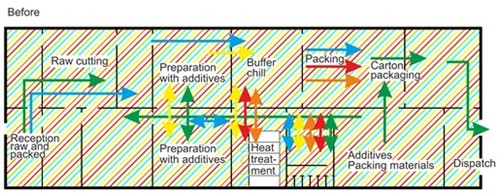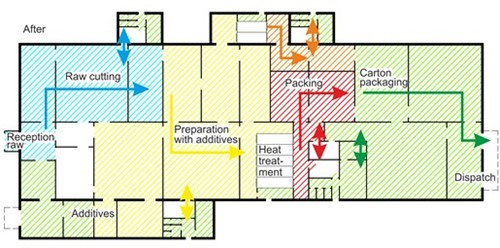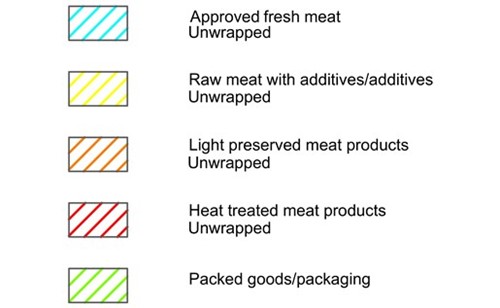Insight
How factory design can increase food safety and profits

Insight
Recent food contamination incidents show that not all companies are aware of how building design can ensure quality and food safety of products throughout the production chain. The building design can contribute to greater efficiency, higher product quality, improved hygiene and increased profits, both when building new factories and restructuring existing plants.
Everybody who works in the food industry is responsible for ensuring the safety of the products that pass through production facilities. Obviously there is a lot of focus on the hygiene of processing machinery and personnel. But in our experience, one crucial area is often overlooked.
"Unfortunately, a lot of food companies often fail to ensure an overall hygienic design of their buildings."
Frank Nyegaard, Market Director
Typically, many factories will have grown gradually over time. As a result the food safety of the original plan has been compromised by increased production, pressure on stocks, new products, wear and tear. And intensified cleaning does not solve the basic risks of this scenario.
In order to address these hygienic issues, it is necessary to take the whole building into consideration as part of the food safety measures. Unfortunately, a lot of food companies often fail to ensure an overall hygienic design of their buildings.
Particularly areas such as refrigeration plants and process ventilation are often being neglected as an area of risk, when it comes to preventing outbreaks of listeria and other bacteria.
The result is often undersized refrigeration and process ventilation plants which cannot keep the products sufficiently cold, and similar issues which threaten the safety of the production flow and food products. Condense water dripping from the ceiling due to lacking refrigeration or drying facilities can drip into food products and potentially contaminate them.
The consequences of a bacteria outbreak caused by insufficient installations could obviously prove extremely serious for the consumers. But closing down production, as well as losing status and market shares due to lack of hygiene would obviously also be very grave to the company itself.
"Improving food safety will often lead to improved efficiency regarding energy consumption, daily operations and production, which ultimately will lead to increased profit."
Frank Nyegaard, Market Director
In many cases it is actually possible to improve food safety and efficiency by a structured re-construction of an existing plant. A refurbished factory appears with clearly defined hygiene zones and optimized flow, which not only increases food safety, but often also results in increased productivity.
Specific risk zones are identified, and mapping of products with different safety requirements is carried out. Production zones have specific colours and the staff is equipped with colour-coded work clothes that correspond to the individual zones. This will help increase the employees' focus on the zoning and help them avoiding overlap of colours and processes.
Food companies will therefore often profit on various levels from the benefits, that follow from optimizing building designs and production flows to achieve optimal hygienic solutions.
Furthermore, improving food safety will often lead to improved efficiency regarding energy consumption, daily operations and production, which ultimately will lead to increased profit.
In short, it is beneficial on a series of levels to include optimal production flows, aligned dimensioning and hygienic design in strategies for food safety.
Everybody who works in the food industry is responsible for ensuring the safety of the products that pass through production facilities. Obviously there is a lot of focus on the hygiene of processing machinery and personnel. But in our experience, one crucial area is often overlooked.
The charts below show how building design and general flow in food production plants can improve hygiene and food safety.

Typical situation in many factories that have grown over time. Food safety in the original plan (if any) has been compromised by increased production, pressure on stocks, new products, wear and tear - intensified cleaning does not solve the basic risks.

The refurbished factory appears with clearly defined hygiene zones and optimized flow, which not only increases food safety, but often also results in increased productivity. The specific risk zones are identified by mapping where products with different safety requirements (= color codes) are located. Colors must not overlap. The factory upgrade is planned as a combination of refurbishment and expansion, so that the necessary limits and hygiene locks for personnel, product and materials can be identified.

The staff is equipped with work clothes that are color-coded similar to the individual zones in order to increase the employees' focus on the zoning.

